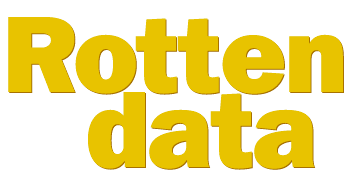|
|
 |
 |
| Cover
Story |
 | |
|
 |
 |
 |
| Product-centric databases are dead. They
now need to be knowledge-management enabled.
Campbell McCracken finds out
why. |
 |
|
John
Thomson, WhiteCross’s vice president of
worldwide marketing
|
Case Study
-
WhiteCross at
Freeserve
WhiteCross Systems has developed database
technology especially suited to rapid analysis of
large volumes of data. It has been working with UK
service provider and portal Freeserve to help it
maximise the customers’ experience on the site and
improving the effectiveness of advertising.
Working with WhiteCross, Freeserve has been able
to gain an understanding of how, when and why
customers are using the site.
"Within three days of looking at their data
we said, ‘Here are two areas that are completely
unrelated but the same people visit them with a
high degree of frequency," says WhiteCross’s John
Thomson. One was horse racing, and the other was
astrology. "So they reoriented those two areas and
cross-linked them and they saw an increase of
about 20 per cent in
traffic."
Another important aspect of the analysis is
speed. For instance, it is possible for an
affiliate to run a one-hour promotion and check
the effectiveness of the promotion in order to run
it again later in the day. Data can be cleaned and
analysed at a rate of 5 billion rows per second,
so that Freeserve can see usage patterns in a
matter of minutes. This allows for ad-hoc, ‘real
time’ analysis. |
 |
Traditionally databases have been used to store
structured data, such as customer names, addresses and
phone numbers. And until recently, corporate databases
tended to be product-centric. "Everybody wanted to build
databases to make decisions on products, sales reps,
territories and so on," says WhiteCross’s vice president
of worldwide marketing John Thomson. But that has
changed.
For
the past few years the emphasis for databases has moved
away from being product-centric to being
customer-centric. "No-one’s come to us in the last three
or four years and said ‘Build me a large database around
my product set.’" says Thomson. "Products have become a
dimension of the customer view of the world."
Multi-channel data collection
One
of the most recent changes in the way customers do
business, and consequently the way organisations need to
gather information, is the web. "When you consider that
the channel for retail isn’t just the store," says
Avellino’s vice president of marketing, Ed Wrazen, "but
it’s also through the Internet, it’s through catalogue
shopping, mobile WAP shopping as well, you can get a lot
of consumer information."
"Probably 90% of what we’re doing right now is
based on web data," says WhiteCross’s Thomson. (See Case
Study - WhiteCross at Freeserve.) "If you look at that
web data you discover your customers are telling you how
they want to do business with you."
"There’s an analysis that you can do that is
called ClickStream," says Communicata’s head of
solutions development, Greg Rouchotas. This gives access
to every click that a customer makes on your website.
"If you are a big catalogue site you might see that a
lot of people are coming down to a specific product
category but they’re not actually buying. It could be
that there’s interest for that product but your price is
too high. So you can play around with price sensitivity
and fine tune your price."
The single
view
The
analysis of customers across all channels allows
organisations to identify how products are selling
through which channels. "This is particularly so within
the retail sector," says Wrazen, "and within the
banking, finance and insurance sectors where a lot of
information from different products is being
consolidated under one single view of the
customer."
"But
as always, you’ve got to get your data right in the
first place," warns Wrazen. "Companies are finding a lot
of inconsistencies and a lot of problems in their source
data, largely because the data has come from disparate
sources, from perhaps 10 or 20 years ago. I know of one
company that has something like 20 analysts just going
through all this data and just trying to find all the
inconsistencies."
One
common reason is that there are ‘duplicate’ records in
the database, in other words records relating to the
same person, but which are held separately because some
of the details are slightly different. It could be that
the name has been input differently (for example John
Smith one time and J. B. Smith another time) or it could
be that the person has moved house.
"12%
of the population move every year," says Data
Discoveries’ marketing manager Claire Breslin. One of
the products Data Discoveries offers is Fastrac. "If you
need to find somebody, that’s what Fastrac will do,"
claims Breslin.For example, it automatically verifies
when a person was last at the address given. Then using
co-habitee and date information, it searches forward on
the current year to find the new address of the person
you are looking for.
In
addition to cleansing the data, you can augment it to
try to create a profile of your best customers. Going by
the 80:20 rule, you’ll want to try to find more
customers like the top 20% that generates 80% of your
income. Data Discoveries’ claims its product Realiser
can help you do that by adding external demographic and
lifestyle information to your existing data. This allows
you to create a comprehensive profile of your customers.
It can let you know where you can find more like
them.
 |
|
Chris
Ward, Oracle’s business intelligence marketing
manager
|
Profile
-
Oracle 9
WOracle launched Oracle 9i, the latest
version of their database, in June with several
new features aimed at KM and Business
Intelligence. For example it boasts integrated
Online Analytical Processing (OLAP) and an
integrated Scoring Engine, rather than bits of
technology that you have to install and maintain
separately.
Another feature is the Oracle Internet
Filing System (IFS), which can be used to replace
a standard file system. "The advantage is that
everything you have is stored in one central place
which is then managed properly by your database
administrator," says Communicata’s Rouchotas.
"Everything is backed up and it’s completely
searchable. Oracle has a fairly complex database
searching mechanism and you can do all sorts of
things, like search for a word that sounds like
something, or an image that looks like an image
you provide."
"File systems have been pretty good when
they’re small scale," says Oracle’s business
intelligence marketing manager, Chris Ward. "If
you’re moving into an area where you’re looking
for versioning, where you’re looking for checking
in and checking out of a file if you make changes,
where you’re trying to build things around the
files, such as XML or metadata, it’s clearly much
more preferential to store it inside a single
kernel."
"As soon as it’s in the database you have
so many more things that you can do with that
dataset. It can still be a Word or Excel document,
but you can serve it up over the web. You can
allow multiple people to work on it. It’s
excellent for workgroups, it’s excellent for
working in teams, whereas I think the traditional
file system is excellent for working
individually."
Oracle 9i also includes a much greater
support for XML than previous versions. "XML
features that are delivered straight away with the
product are things like parsing," says Ward. "So
you can take a file and run it using the IFS and
it will parse the file and encode it in such a way
that it has an XML structure, with metadata and
everything else around it. And of course you can
render a file out to an XML standard. Also we
deliver a software development kit so you can
extend the structure."
|
 |
|
Clustered
Computing
The other important new feature with Oracle
9i comes into play when your volume of data is
increasing exponentially or you’re working off the
web and you’re looking at clicks and datasets that
produce massive volumes of data in real time. One
way of achieving that is to cluster computers
together to share the processing power between
them.
Clustering technology has been around for a
few years but it’s only really been available on a
mainframe system, and if it was down on a UNIX or
NT system, as soon as you’ve extended you’ve had
to repartition and change your application to
recognise the new part of the cluster."The big
breakthrough technology in 9i is something called
Real Application Clusters," says Chris Ward.
"Suppose you were running a small company
and you had an NT box with a single processor. You
can put Oracle 9i on there, with Real Application
Clusters, and if you wanted to extend your
hardware you could just plug another box into it
and it would look as if it was one instance, one
database. You would not have to repartition your
data or change your applications. It’s automatic.
And that’s the big change."
|
Where the single view
stops working
However, there is a problem with single view
concept. "Our Matching Engine software will look for
duplications across an organisation’s database," says
Innovative Systems’s senior vice president of European
operations, Mike Healy. "When we do that analysis and
get the marketing and e-commerce people in a room and
say ‘Which of these are duplicates?’ they will all argue
about it. Typically the e-commerce people are going to
be incredibly cautious about bringing the records for
John Smith and J. B. Smith together, because maybe that
would give John Smith access to J. B. Smith’s
transactional information."
"And
although they are being the most cautious, the view that
they would build would be the least accurate because
really 99.9% of the time those two people are the same
person. If you don’t bring them together you leave the
database riddled with duplicate customer views. When you
then go to do KM, most of which is derived from
transactional information, those are incredibly wrong."
In one example, a top bank thought they had 17 million
clients. But after analysis they had 12.5 million
clients, the rest were duplicates. So 9 million customer
profiles were wrong (the 4.5 million duplicates and the
4.5 million originals), in other words more than 50% of
their database.
"The
single view of the customer across the enterprise is now
hampering people’s ability to do effective KM and
targeting," says Healy. "We would argue that you should
have one place where customer views are maintained and
you should have more than one view of the customer -
Purpose Views - for example an ecommerce view (where the
duplicates are not brought together) and an operational
view (where they are)."
 |
 |
 |
|
Ed Wrazen,
Avellino’s vice president
of marketing
|
Greg Rouchotas,
Communicata’s
head of
solutions development
|
Mike Healy, Innovative Systems’s
senior vice president of European operations
|
Database
technology
Database technology itself continues to evolve.
There are tools now to hold different types of data, not
just structured textual data or numeric data, but also
graphics, images, bills of materials, parts explosions,
videos, multimedia, voice etc. You can hold the data in
a data warehouse format, or a customer view, or a
product view and so on. (See Profile -Oracle
9i).
Volume and speed of access are no longer issues.
The amount of data that databases can hold is vast and
response times are generally good too. "However it still
boils down to design," says Wrazen. "That’s one thing
that does not go away. You still have to ensure that the
data is in a format that gives you optimal response time
and efficiencies."
Increasingly database technology now spans a vast
array of computing devices from PDAs (you can run DB2 on
Compaq iPAQs) right up to an IBM System 390 mainframe
and every platform in between. "So there is a very nice
migration path should you need to move your database to
a faster device," says Wrazen. Of course you wouldn’t
run a mission critical application with millions of rows
on a PDA. "But it’s a nice technology for downloading,
say, a salesman’s view of particular clients. We’re
going to see more use of hand-held computing technology,
and database vendors are certainly moving in that
area."
|